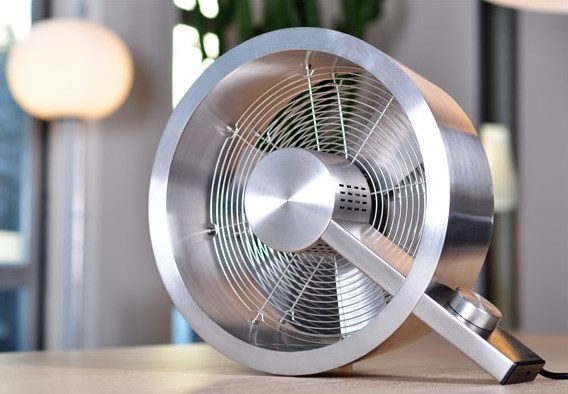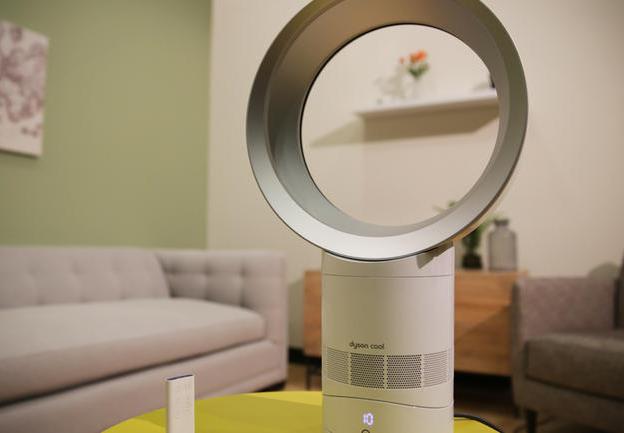Your guide to shopping
- Details
- PRACTICAL PRACTICAL
- ➤ SHOPPING HOW-TO SHOPPING HOW-TO
- Published: 31 July 2016 31 July 2016
In the middle of summer, it’s important that your travellers don’t suffer too much from heat in your rental. A fan is often indispensable and can offer your guests a real day-to-day comfort. But which model should you choose? Like any other electrical appliance, this acquisition is not as simple as it sounds. Indeed, there are many criteria to consider, depending on how it will be used and which room needs cooling. Size, air flow, noise levels, the options are numerous ... A guide on what to look for in a fan that both looks and keeps you cool.
How fans work
Unlike an air conditioner, fans do not produce cold air, they circulate the air, creating an air flow via rotating blades which is often enough to cool a room and create a sensation of freshness. You need to choose your fan depending on how it will be used. Is a simple fan enough to cool your space, or do you need a higher-end model to deal with higher temperatures? However, keep in mind that beyond a certain threshold, a fan will not suffice, if the room is too hot, only an air conditioner will do the trick.
The different types of fan
There are five major fan models, and the one you choose will depend on the type of room to be cooled and the number of people who will use it.
- The table fan
This model is rather intended for use by one person. You can place it on the desk if your rental often hosts business travellers, or on a table/ piece of furniture that’s at least a meter high (nightstand, kitchen worktop, near a TV ...) They come in several sizes, the most common being those of 25 cm and 40 cm diameters. The advantage of the table fan is that it provides an economic solution both for initial purchase and in terms of electricity consumption.
- The pedestal fan
This type of fan offers a wider air distribution which allows it to cool several people simultaneously. It is well suited for large rooms, including the living room. Practical due to its height-adjustable stand, they often come with a remote control and have three different airflow speeds. For more efficiency, choose a model with a powerful 60 Watt engine and an oscillation system that allows for better airflow throughout the room. Choose a sufficiently wide oscillation angle, around 55 to 60°. Vis a vis security, check that the cover bars are close together or stiff enough to prevent a child from slipping their fingers in. Today, certain fans are equipped with grills that have tight spacing between the bars, some as tight as 8 mm.
- The tower fan
This fan distributes a vertical airflow which sweeps through a room like a gentle breeze. Saying that, the airflow is generally lower than that of a pedestal fan. Being particularly quiet, this device is suitable for bedrooms. Its slender size makes it easy to store if you need more space in your rental. However, check its stability before buying. The tower fan has the advantage of offering more often than not, a beautiful design and a 360° oscillation.
- The floor fan
More powerful than the three previous models, the floor fan presents itself in the same way as a pedestal fan, with the exception that it can only be placed on the ground. Its role is to propel fresh air upwards.
- The ceiling fan
This model that attaches to the ceiling, alone or combined with a lighting feature, is designed to refresh your rental’s main room or bedroom. Bear in mind that the wider the blades, the more the air flow will be felt. This fan’s disadvantage is that it’s hard to access for cleaning or for maintenance in case of failure. Saying that, some ceiling fans can also change their rotation direction, allowing them to push the heat down in the winter.
Essential criteria
Once you have selected the type of fan most suited to your needs, look into two important criteria: the air flow and decibels.
The air flow: the power of the device determines the amount of air that it can move. This air flow is measured in m3 per minute. The softest fans offer an airflow of 15 m3/min (ideal for targeted action, such as on a desktop for example), versus 150 m3/min for the most efficient fans (ideal for cooling an entire room). Be aware that some fans can reach 350 m3/min.
Decibels (the volume): industry standards do not impose a minimum volume for a fan when it is in working condition; however, the manufacturer must indicate the number of decibels (dB) on the packaging. The higher this number, the more noise the fan will emit. The market average is around 50dB and a generally acceptable volume is around 40dB. However, if you are placing the fan in a bedroom, it is recommended to choose a model with a maximum of 35dB.
Interesting options
In the spirit of comfort and well-being, most fans incorporate certain options that may come in handy...
The remote control: it allows someone to control the fan (speed, start, stop, swing ...) without having to move.
Sleep Mode: designed for the bedroom, it gradually decreases fan speed allowing people to fall asleep without being disturbed by noise.
The timer: it allows for the programming of when the fan starts and stops.
The anti-mosquito: the fan has a slot designed for inserting mosquito repellent tablets.
The fragrance diffuser: this mode allows to perfume and to purify the room during ventilation thanks to a slot reserved for essential oils.
The Breeze Mode: the fan randomly varies its speed, simulating a very pleasant light wind.
Bladeless: today, certain fans are bladeless! Air circulation is possible via an opening and air distribution pipe. Safe and easy to clean, they emit a fluid and continuous airflow.


